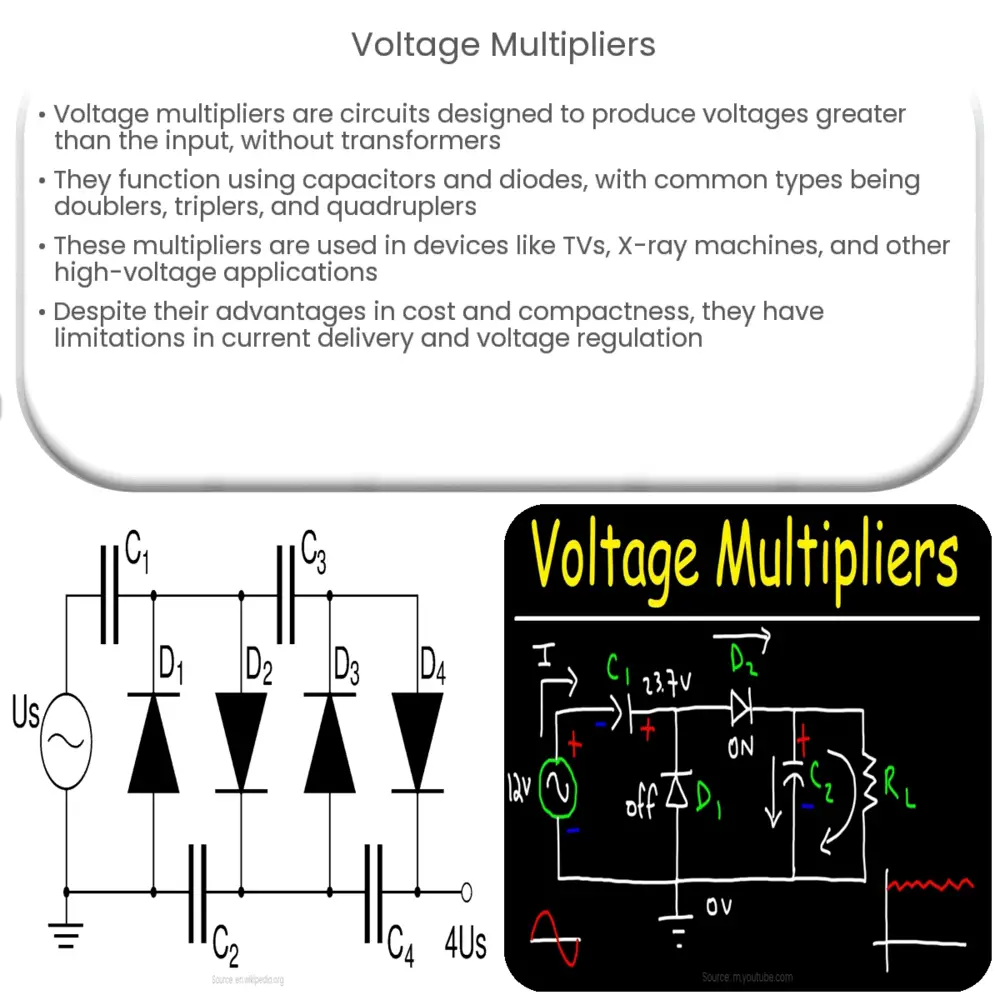Explore the world of Voltage Multipliers, their types, principles, applications, advantages, and limitations in our detailed guide.

Introduction to Voltage Multipliers
A Voltage Multiplier is an electrical circuit designed to output a voltage that is an integer multiple of its input voltage. This is achieved without the need for a transformer, making it a compact and efficient solution for applications requiring high voltages. It plays a pivotal role in electronic devices that require higher voltage levels than what their power sources can provide.
The Basic Principles
At the heart of a voltage multiplier is a simple but ingenious use of capacitors and diodes. By arranging these components in a specific configuration, the circuit can store and combine voltages, thereby producing an output voltage that is a multiple of the input voltage. The arrangement of capacitors and diodes varies depending on the type of voltage multiplier, with the most common types being the doubler, tripler, and quadrupler.
Voltage Multiplier Types
- Voltage Doubler: This is the simplest form of a voltage multiplier. As the name suggests, it doubles the input voltage. It achieves this by using two capacitors and two diodes in a specific arrangement.
- Voltage Tripler: The voltage tripler, as you may have guessed, triples the input voltage. It does this by adding another stage to the voltage doubler, involving an extra diode and capacitor.
- Voltage Quadrupler: A voltage quadrupler quadruples the input voltage. It is essentially two voltage doubler stages connected in series, with the output voltage being the sum of the voltages across the capacitors in both stages.
Applications of Voltage Multipliers
Voltage multipliers find a wide range of applications, particularly in devices that require high voltage outputs. Some common applications include:
- Televisions and Monitors: High voltage is required to create the electric field in CRT displays. Voltage multipliers are used to generate this voltage.
- X-ray Machines: X-ray machines require high voltage to accelerate the electrons towards the target metal. A voltage multiplier circuit is used to achieve this high voltage.
In addition to these, voltage multipliers also find applications in power transmission systems, laser systems, electrostatic systems, and many other domains where high voltages are a requirement.
Advantages and Limitations of Voltage Multipliers
Despite their apparent simplicity, voltage multipliers offer significant advantages, but they also have their limitations.
Advantages
- Compactness: One of the significant advantages of voltage multipliers is that they are able to generate high voltages without the need for a transformer, leading to compact and lightweight circuits.
- Cost Efficiency: Voltage multipliers are typically built using inexpensive components such as diodes and capacitors, making them cost-effective solutions for voltage increase.
- Versatility: Voltage multipliers can be designed for doubling, tripling, quadrupling or even more, providing a versatile solution for diverse high-voltage applications.
Limitations
- Current Limitation: While voltage multipliers can produce high voltages, they are typically not designed to deliver high currents. This limits their use in high power applications.
- Voltage Regulation: Voltage multipliers can suffer from poor voltage regulation, particularly when the load varies. This means that the output voltage may not be stable under different load conditions.
Conclusion
In conclusion, voltage multipliers represent a key electronic circuit design that enables the generation of higher voltages without the need for bulky and expensive transformers. Through the simple but clever use of capacitors and diodes, voltage multipliers provide a compact, efficient, and cost-effective solution for applications requiring high voltages.
While they do have limitations, such as their inability to deliver high currents and potential issues with voltage regulation, their numerous advantages and broad applicability in various fields make them an invaluable tool in electrical and electronic engineering. As technology continues to evolve and miniaturize, the need for efficient, compact, and cost-effective solutions like voltage multipliers will only grow.

